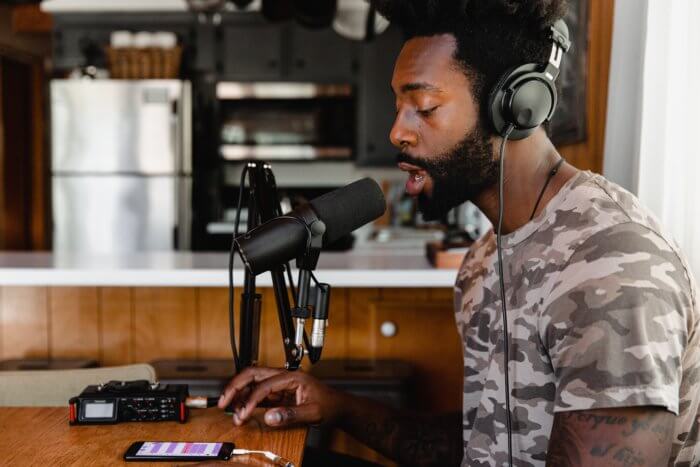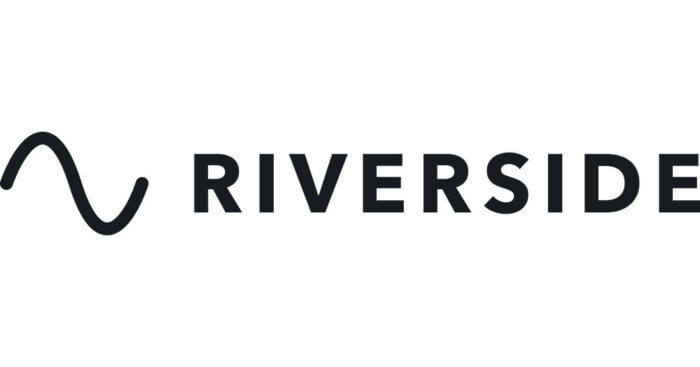How to Record a Podcast Remotely
Right up top – for this article about how to record a podcast remotely, we’re assuming you already have your own podcast set-up, if that’s not the case, we’ve got an article about a beginners set-up that costs less than $200 here.
Now that we’re all on the same page with our at home studio’s all set up, let’s dig into how to record a podcast remotely, by answering the question – why would you want to record a podcast remotely?
Table of Contents:
- Why Record a Podcast Remotely?
- Ground Rules for Recording Remotely
- Software for Recording Remotely
- More Solutions for Recording Remotely
- After You’ve Published your Podcast
Why Record a Podcast Remotely?

There are a myriad of reasons why it’s beneficial to record a podcast remotely. What you lose in face-to-face communication, you gain in accessibility and a greater range of guests or co-hosts. Take The Beatles podcast Nothing is Real for instance. The hosts live in different cities in Ireland, and without remote podcasting they wouldn’t be able to host their show, and not to mention the global spanning guests they’ve brought in to discuss all things Beatles.
Remote podcasting is also a cheaper way to make a podcast, as you don’t need to have an extra microphone set-up available for your rotating cast of guests. They’ll take care of all the equipment themselves. This reduced need for equipment also means you can have as many guests as you’d like on your show, all at once. Whereas before you’d be limited to the amount of equipment you have in your studio.
Ground Rules for Recording Remotely
These may seem obvious, but they can be easily overlooked if you aren’t mindful. It might even be worth creating a checklist of these to go over before everytime you start recording.
The Ground Rules:
- Wear headphones
- Silence your phone
- Close all tabs and distractions on your computer
- Eliminate background noise that your microphone could pick up. For example, always close the door of the room you’re in to remove the sound of traffic outside, and turn off any loud heaters or air conditioners nearby.
- Choose recording area carefully to avoid echo
- Bedrooms work as great remote recording studios because pillows and blankets help absorb the echo.
- The same is true with a coat closet, as the clothes absorb the sound, and the small room improves the audio quality.
Be sure to communicate these ground rules to your co-host or guest as well, because it only takes one bad recording to greatly diminish the quality of the whole podcast.
Software for Recording a Podcast Remotely
Squadcast ($10/month – $150/month)

Squadcast is software designed to be everything you need for remote recording, with cloud storage, an audio editor, and video recording.
- Features:
- Video recording
- Audio Editing Software
- Cloud storage back-up
- Isolated Audio Files for each guest
Alitu ($32/month or $320/year)

Alitu features remote call recording, but mostly focuses on advanced easy-to-use audio editing techniques.
- Features:
- Automated audio clean-up
- Merge double-ender recordings
- Audio editing software
- Add Music to your recording
CleanFeed (Free – $34/month)

CleanFeed has remote audio recording similar to Squadcast and Riverside but is focused towards live audio productions. It’s the program that BBC trusts to record many of their podcasts.
- Features:
- Live audio mixing tools
- Isolated Audio Files for each guest
- Live audio plug-ins like jingles and sound effects
- Advanced invites to control recording session guests (great for live call-ins)
- Price:
Riverside FM ($7.5/month – $24/month)

Riverside.fm is a wonderful tool for recording a podcast remotely. They have 4k video recording, and uncompressed 48kHz WAV audio for every guest. And the audio and video files are automatically uploaded to the cloud while you’re recording, so the files are not lost if someone cuts out.
- Features:
- Video recording
- Mobile App
- Audio editing software
- Cloud storage back-up
- Isolated Audio Files for each guest
More Solutions for Recording a Podcast Remotely
Those companies make it super easy to record a podcast remotely, but they aren’t the only way! If you don’t feel like you’d make use of all the fancy features, here’s a few alternative methods for recording a podcast remotely.
Double Ender
A really basic DIY solution that many professional podcasts have used for years is called a double ender. To record a double ender, simply have your guest record the audio individually on their end, while you record your audio on your end. The McElroy brothers do this, and simply count down together to make sure that their recordings are synced up. If that doesn’t work perfectly, you can always adjust the recordings in post production to match-up the audio files.
Pro tip: If your guest doesn’t have any recording equipment, the best way for them to capture their audio is through the voice memos app on their phone.
Professional Studio
Now for an expensive option that you might only want to use if you’re rolling out the red carpet for your guest. Most major cities have recording studios designed for podcasters to rent out by the hour, so you can always spend extra money to make your guest feel really special.
After You’ve Published your Podcast

Once you’ve sorted out all the trickiness around recording a podcast remotely, and you have released your episode to the world – your work’s still not done! Now that you have content, it’s time to grow your show.
To do that, we recommend claiming your podcast on Podchaser. Once claimed, you can edit your page, boost your discoverability with SEO, add credits for your collaborators, and even sell merchandise.
Read More Podcasting Tips
Unlock more with Podchaser Pro
- Audience Insights
- Contact Information
- Demographics
- Charts
- Sponsor History
- and More!

- Account
- Register
- Log In
- Find Friends
- Resources
- Help Center
- Blog
- API
Podchaser is the ultimate destination for podcast data, search, and discovery. Learn More
- © 2024 Podchaser, Inc.
- Privacy Policy
- Terms of Service
- Contact Us